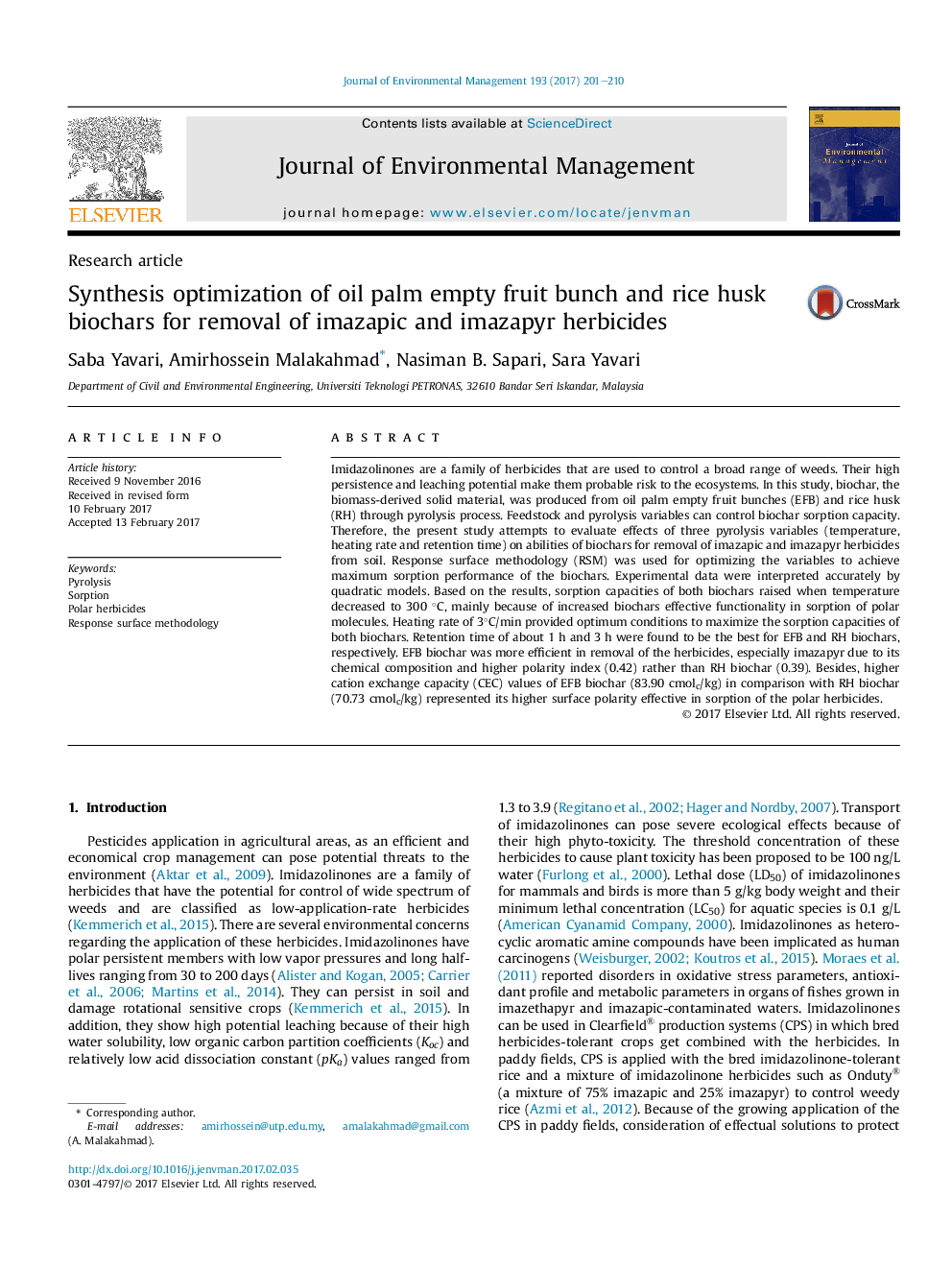| Article ID | Journal | Published Year | Pages | File Type |
|---|---|---|---|---|
| 5116824 | Journal of Environmental Management | 2017 | 10 Pages |
â¢Adsorption of polar persistent herbicides was inversely correlated with HTT.â¢Adsorption of polar herbicides was inversely correlated with heating rate.â¢Retention time of 1 and 3 h were the best for EFB and RH biochars, respectively.â¢EFB biochar was more efficient in removal of polar organic pollutants.â¢Biochar functionality was the effective factor on sorption of polar herbicides.
Imidazolinones are a family of herbicides that are used to control a broad range of weeds. Their high persistence and leaching potential make them probable risk to the ecosystems. In this study, biochar, the biomass-derived solid material, was produced from oil palm empty fruit bunches (EFB) and rice husk (RH) through pyrolysis process. Feedstock and pyrolysis variables can control biochar sorption capacity. Therefore, the present study attempts to evaluate effects of three pyrolysis variables (temperature, heating rate and retention time) on abilities of biochars for removal of imazapic and imazapyr herbicides from soil. Response surface methodology (RSM) was used for optimizing the variables to achieve maximum sorption performance of the biochars. Experimental data were interpreted accurately by quadratic models. Based on the results, sorption capacities of both biochars raised when temperature decreased to 300 °C, mainly because of increased biochars effective functionality in sorption of polar molecules. Heating rate of 3°C/min provided optimum conditions to maximize the sorption capacities of both biochars. Retention time of about 1 h and 3 h were found to be the best for EFB and RH biochars, respectively. EFB biochar was more efficient in removal of the herbicides, especially imazapyr due to its chemical composition and higher polarity index (0.42) rather than RH biochar (0.39). Besides, higher cation exchange capacity (CEC) values of EFB biochar (83.90 cmolc/kg) in comparison with RH biochar (70.73 cmolc/kg) represented its higher surface polarity effective in sorption of the polar herbicides.
